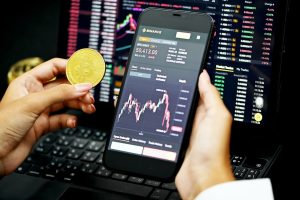Forex and CFDs are two of the most popular financial instruments for trading in the global market. Both of these instruments enable traders to participate in the financial markets and generate profits by speculating on the price movements of various assets. In this article, we will explore what Forex and CFDs are, how they work, and the differences between the two.
What is Forex?
Forex, or foreign exchange, is the largest financial market in the world, with an average daily turnover of over $5 trillion. The Forex market is where currencies are traded, and it operates 24 hours a day, five days a week. Forex trading involves buying one currency and selling another currency simultaneously, with the aim of profiting from the difference in their exchange rates.
One of the key features of the Forex market is that it is highly liquid, meaning that traders can enter and exit positions quickly and easily. This is because there are always buyers and sellers in the market, and the sheer size of the market means that it is very difficult for any one entity to manipulate the prices.
Another important aspect of Forex trading is leverage, which allows traders to control a large position with a relatively small amount of capital. Leverage is offered by brokers, and it can range from 1:1 to 1:500 or more. However, it is important to note that while leverage can magnify profits, it can also increase losses.
What are CFDs?
CFDs, or contracts for difference, are financial derivatives that allow traders to speculate on the price movements of various assets without actually owning them. CFDs can be traded on a wide range of underlying assets, including stocks, indices, commodities, and currencies. When trading CFDs, traders enter into a contract with their broker to exchange the difference in price of the underlying asset from the time the contract is opened to the time it is closed.
One of the main advantages of CFDs is that they offer traders the ability to profit from both rising and falling markets. This is because traders can buy or sell CFDs, depending on their market outlook. CFDs also offer leverage, which allows traders to control a larger position with a smaller amount of capital.
However, it is important to note that CFDs can also carry a high level of risk, as losses can exceed the initial investment. This is because CFDs are leveraged products, and any movements in the underlying asset can have a magnified effect on the value of the contract.
Differences between Forex and CFDs
While both Forex and CFDs are popular financial instruments for trading, there are some key differences between the two. One of the main differences is the underlying asset. Forex trading involves the buying and selling of currencies, while CFDs can be traded on a wide range of assets, including stocks, indices, and commodities.
Another difference is the way in which profits are generated. In Forex trading, profits are generated by the difference in exchange rates between two currencies. In CFD trading, profits are generated by the difference in price of the underlying asset from the time the contract is opened to the time it is closed.
Leverage is another key difference between Forex and CFDs. While both instruments offer leverage, the amount of leverage offered by brokers can differ significantly. Forex brokers typically offer higher leverage than CFD brokers, which can increase the potential for profits but also the potential for losses.
Conclusion
Forex and CFDs are two of the most popular financial instruments for trading in the global market. Both of these instruments offer traders the ability to profit from the price movements of various assets, but there are some key differences between the two. Forex trading involves the buying and selling of currencies, while CFD trading can be done on a wide range of underlying assets. Additionally, Forex brokers typically offer higher leverage than CFD brokers. As with any financial instrument, it is important for traders to understand the risks involved and to trade responsibly.





